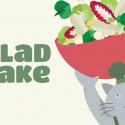Category: Blog Entries
-

Developers Should Learn Design, Designers Should Learn to Code
I’ve pondered the question over the entire course of my time working as a freelancer and continue to ponder it to this day: Should developers learn to design? The common advice to designers is that yes, you should learn to code. But what about the other way around? With the recent push to get more […]
-

Salad Shake, Our Food & Drink App!
Over a year ago, my husband and I started learning Swift in an effort to make our own app for iOS. Pretty much a year later, we finished Salad Shake, a Food and Drink app for iOS Devices. We learned a lot, and we’re getting ready to launch it on July 11, 2016 to the […]
-

Should I Learn Javascript or jQuery First?
This has been a debate raging all over the development world with a lot of heated conversations opposing or promoting one or the other side. I wanted to put my thoughts down somewhere and since this is my blog, why not? I’m of the opinion that before you can determine which you should learn first, […]
-

Is it Gif or Jif?
On a lighter topic today, I want to share with you a story of my childhood. Back in the 90s, the very first image I downloaded onto my computer (downloading images and saving them on your hard drive was a big thing back then), was an animated gif of all 151 Pokemon. It took me […]
-

Do You Suck at Math? Learn to Program Anyway
There’s something to be said for being good at math. Or at least not sucking at it. I suck at it, and playing catch up after all these years of doing very little with math also sucks. I would be lying if I said I still hated it as much now as I did back […]
-

Like the Iron Ion Facebook Page
After a little over two years, I finally got around to setting up an Iron Ion Facebook page for Iron Ion. It wasn’t complicated, difficult or very spectacular. I’m just amazed by how long it took me to get around to it. I don’t even have a good excuse, it was just like saying to […]
-

Re-Discovering Sublime Text & Shortcuts
Recently started using Sublime Text for a more extended period of time. I spent more time getting it up and running than Brackets, but I think I’m fairly happy with how it’s going. The main reason I switched back? I was teaching using Sublime Text and it was getting ridiculous not knowing the keyboard shortcuts […]
-

Super Cool CodePens
Looking at the cool stuff other people have made on CodePen can eat up a lot of free time, especially when it comes to seeing how far web languages have gone over the years. Back when I was a kid, playing around with Javascript, it was already amazing if you could replace the default cursor […]
-

Iron Ion Site Design Updated
Welcome to the updated design for Iron Ion. I decided to go with a less cute design while still maintaining a level of personality with some of my favorite bright and fun colors. There are still some things I need to work out with the design. Most notably the wonky blog layout, but for those of you looking for the articles on this site, they should display good enough for now.